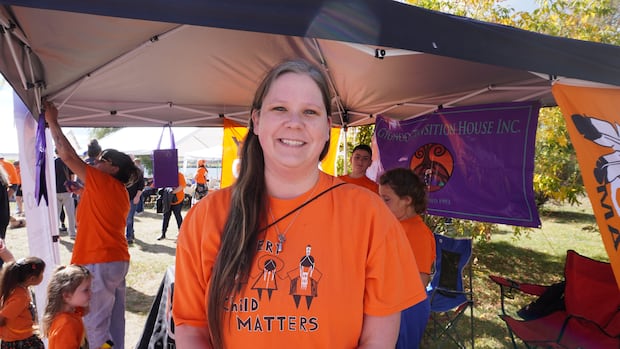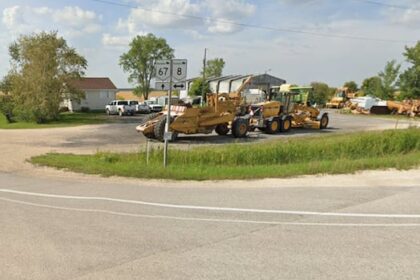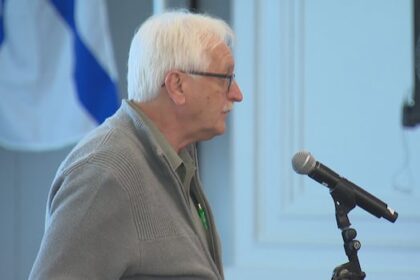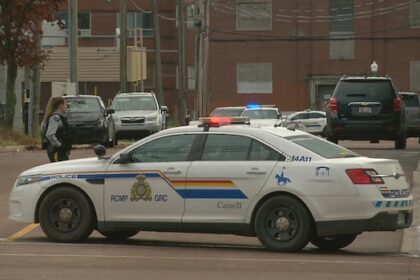New BrunswickAfter the body of a Bilijik woman was found on Fredericton’s north side, Katie Lunney shared her thoughts. She has been researching and working on a database of missing and murdered Indigenous women and girls.Katie Lunney has been building a database of missing and murdered Indigenous women and girlsJennifer Sweet · CBC News · Posted: Oct 28, 2025 5:00 AM EDT | Last Updated: 2 hours agoListen to this articleEstimated 4 minutesKatie Lunney, a crisis intervener at Gignoo Transition House in Fredericton, has added about 400 names to an MMIWG database. (Rachel Cave/CBC)A woman who researches violence against Indigenous women and girls and works with victims is speaking out after two deaths in Fredericton in the span of six weeks. “I’m really, really, really sad and really tired of hearing about it. … We have to do something,” said Katie , who works as a crisis intervener at Gignoo Transition House, a shelter in Fredericton for Indigenous women and children.“If something happens to one person, all the communities feel it. All of our hearts are breaking.”Two recent victims are Sonia Vivian Timbre and Montana Solomon, whose deaths Fredericton police are investigating as homicides.Timbre, 42, was found dead in a downtown home Sept. 7. She was a member of the Acho Dene Koe First Nation in the Northwest Territories.Aaron Jesse Rice, 45, has been charged with second-degree murder in Timbre’s death.He’s being held in custody and his next court date is Nov. 14, for possible scheduling of a preliminary hearing.Solomon, 28, of Kingsclear First Nation, or Bilijk, was found dead in a wooded area near Two Nations Crossing on Oct. 20.In the wake of these deaths, Lunney shared a video on social media of herself scrolling through a database of more than 1,000 women and girls from across the country who have been murdered or gone missing.She added about 400 of the names during a month-long practicum for her addictions counselling training at the New Brunswick Indigenous Career College.Lunney said each page in these binders is dedicated to one missing or murdered Indigenous woman or girl. She added about 400 names by cross-referencing against lists compiled by other organizations. (Submitted by Katie Lunney)The list remains far from complete, said Lunney, and the numbers just keep growing.Her post had about 5,000 views as of Friday and prompted quite a few people to call or message her, for conversations that she describes as dark but important. “All I’m trying to do is spread awareness and get people talking about it and opening their eyes to it because there are people that are denying it,” said Lunney, a member of Elsipogtog First Nation.She also hopes to inspire others to ask questions, such as why is there so much racism and violence toward Indigenous people?“We just don’t even know what to do. We feel like the system is failing. What’s the point of going and asking for help when it’s failing us, right?”Of the many women’s stories in the database, a few really stand out to Lunney as deserving attention.The cases of Maisy Odjick and Shannon Alexander are among them.Katie Lunney shared a video on Facebook of her scrolling through hundreds of names in her Canadian MMIWG database. Some names date back decades, some are solved and others are unsolved. (Katie Lunney/Facebook)The two teens, 16 and 17, disappeared on a night they were supposed to be going to a school dance and having a sleepover in Manawaki, Que., in September 2008.Despite leaving all of their belongings behind, they were initially labelled runaways, Lunney said.Community members searched for about a month before police began to take the disappearances seriously, she said, but what became of the teens remains unknown to this day. LISTEN | Katie Lunney mourns as more names join MMIWG database:Information Morning – Fredericton16:34Missing and murdered Indigenous women and girlsThe community is mourning the death of a young Indigenous woman who was found in Fredericton last week. Colleen Kitts-Goguen spoke to Katie Lunney with Gignoo Transition house. She says these deaths are reminders of the grim reality for Indigenous women.Another outrageous case is that of Cindy Gladue, Lunney said.She was a 36-year-old Cree and Métis mother of three, who was violently sexually assaulted and left to bleed to death in an Edmonton motel room in 2011.Gladue was dehumanized during court proceedings against her killer, said Lunney, with labels such as Indian, hooker and prostitute. She suffered further indignity by the display of her disfigured partial remains in court, Lunney said, and after the proceedings, those remains disappeared. “How does that even happen?” Lunney said. “How did someone say, ‘Oh, we don’t need these anymore,’ and just throw them out?”For cases that date back to the 1970s and ‘80s, Lunney wasn’t able to find more than a single sentence for some women and girls.“This person, she went missing — case closed. This person, we found her body — case closed.”She found out recently that one of her own relatives, Gladys Simon of Elsipogtog, disappeared from the Restigouche Hospital Centre in the early 2000s.Her disappearance was only reported to her family and police after two weeks, Lunney said, and it was eight years before her remains were found.“They’re all tragic stories,” she said.“If I can bring it out just a little I’m helping share who they were.”ABOUT THE AUTHORJennifer Sweet has been telling the stories of New Brunswickers for over 20 years. She is originally from Bathurst, got her journalism degree from Carleton University and is based in Fredericton. She can be reached at 451-4176 or jennifer.sweet@cbc.ca.With files from Information Morning Fredericton
MMIWG researcher speaks out after two bodies found in Fredericton











